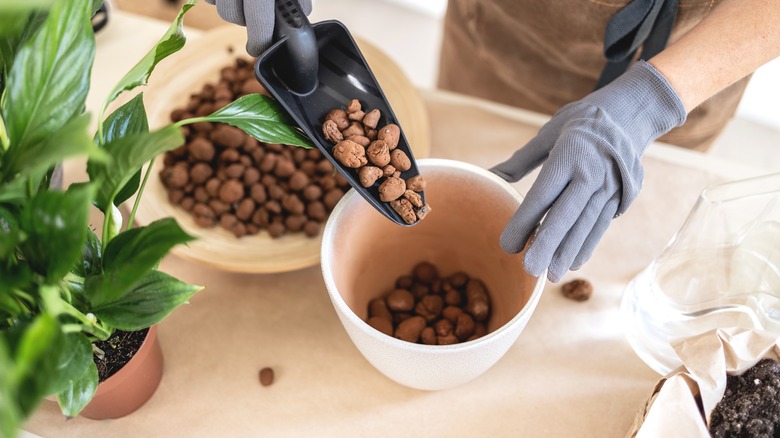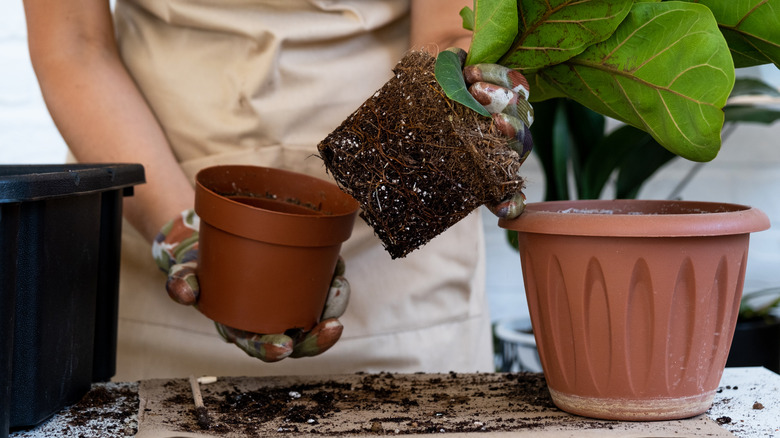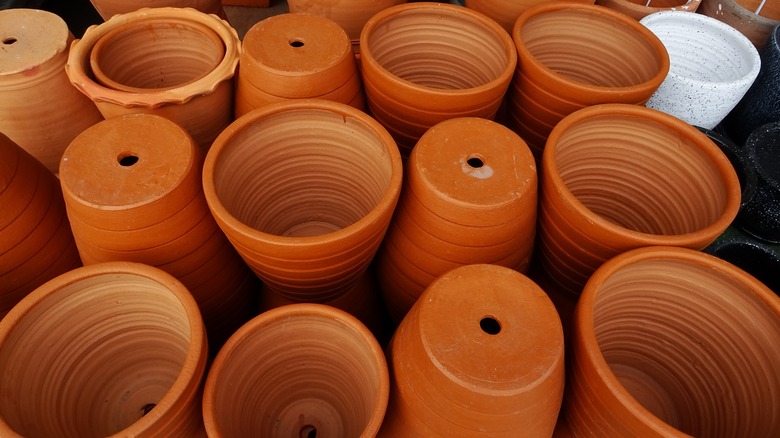The Common Plant Pot Drainage 'Hack' You Should Truly Avoid Trying At All Costs
Gardening can be challenging, especially for those who are new to it. You follow the best advice to care for your plants and ensure they grow properly. For example, you water them daily, fertilize them when needed, or repot them when they're outgrowing their current pot. Whether you stick to the basics or go above and beyond for your plant, one tip you shouldn't follow when planting new plants in pots is adding a layer of rocks to the pot's base before the soil. Supposedly, the rock layer improves drainage in the pot, but it doesn't.
You might've heard that putting pebbles, small rocks, or gravel at the bottom of your pots will benefit your plant's growth and prevent soggy soil. However, layers of rocks or gravel can harm your plant's roots by trapping the water. Even though water flows through rocks easily, it works best when there are only rocks in a pot; when there's a layer of soil, the water can't push through. Your plant can't survive with rocks as its soil, so there's no need for them if they won't help the plant grow. Yet, you still need something that will adequately drain the soil's water.
The rocks will create a saturated soil layer
Mixing fine-textured soil with coarse rocks or gravel will prevent water from properly draining because gravity will pull it upward before reaching the bottom layer. It's natural to think that adding water to the soil on top of a rock layer will allow it to flow through. However, according to TikTok user Jessica (@fromdreamtoseed), adding a rock layer to the soil will create a saturated soil layer when you water the plant. While the water drains from the top to the bottom, it'll stop right before it reaches the rock zone, known as a perched water table. "The water will move laterally and fill all of the micropores," claims Jessica.
You'll end up with soggy soil, causing the plant's roots to rot. When you add more water to the pot, the water previously there will drain through the rock layer since gravity will force it out. While you eliminate the old water, you still end up in the same situation with the new water. It's best to use a pot with a drainage hole for the water to exit instead of adding coarse material to the pot's base.
On the other hand, coarse material isn't the only way to create a perched water table. If you mix any different type of material with regular potting soil, the water won't drain. For example, adding a layer of sand or mixing golf balls with potting soil won't let the water through.
Use pots with drainage holes
Using plant pots with drainage holes is better than getting creative with drainage techniques and adding various things inside. Whether you purchase pots with draining holes or add holes to a bucket, proper water flow will keep your plants alive and healthy. Adding holes to any bucket or pot is easy. All you need to do is use an electric drill with a masonry drill bit to create a few holes in the base. You can add a coffee filter inside the bucket before pouring in the soil to ensure the soil doesn't spill out of the holes inside your home. But if you keep the pot outside, you won't have to worry about the mess.
Amending your potting soil is also highly beneficial for draining water out of the pots. Mixing vermiculite, perlite, or coarse sand into your potting soil will increase aeration and drainage. Even though you shouldn't add a single layer of these materials to the pot's base, mixing them with the soil will create more air pockets, which will allow the water to travel through. Not every plant will work well with all the materials, though, so it's essential to research which materials to combine with your plant's soil.


